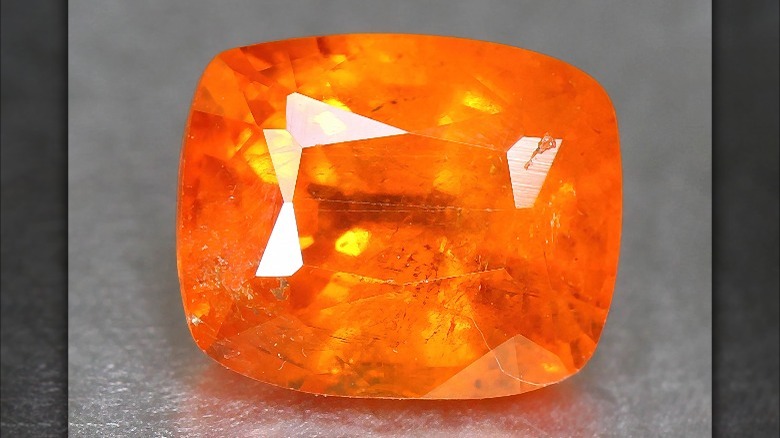The Rarest Mineral On Earth Has Only Ever Been Found In One Place
While some scientists are hard at work investigating phenomena beyond Earth, others are still making new discoveries on our planet. Among the discoveries that keep piling up are the identification of various semiprecious stones and minerals. In fact, there are more than 5,000 different types of minerals, which researchers think is 10 times as many as anywhere else in the solar system. And, the rarest mineral on the list is kyawthuite because only one natural sample has ever been found, so far.
Gemstone hunters discovered the kyawthuite sample in 2010 in the Chaung Gyi valley near Mogok, Myanmar. However, they didn't realize what they had and put it out on the market to sell. That's when Burmese mineralogist, petrologist, and gemologist Dr. Kyaw Thu, who also owns the Macle Gem Trade Laboratory, came across it. Since it was difficult to determine the rarity of the mineral in Myanmar, Dr. Thu enlisted help from International Mineralogical Association and U.S. experts. Then, the stone became an approved mineral by the IMA in 2015, and a study of it was published in Mineralogical Magazine in 2017.
The authors describe it as a 1.61-carat mineral that's reddish orange in color, has a white streak, and features a transparent adamantine luster. The gem is brittle with three cleavage planes (breaks along three distinct planes of weakness) and a conchoidal fracture (a breakage with curved, smooth surfaces resembling the inside of a seashell). Plus, it's eight times as dense as water, so it's heavier than it looks.
How kyawthuite formed and what it's used for
Minerals are crystals that are naturally formed of various elements under intense conditions. In the case of kyawthuite, scientists concluded during their study that the gem primarily contains bismuth (a silvery pinkish metal), antimony (a silvery bluish white metal or metalloid), and tetraoxygen (a stable red solid of oxygen molecules), as well as trace amounts of other chemicals and compounds.
However, all that is known for sure about how this mineral is formed is that the circumstances are unique. It was uncovered as a waterworn crystal in alluvium, and based on its composition, researchers believe it originated in pegmatite. Such igneous rocks are created during the last stage of crystallizing magma and often contain very large and rare crystals and minerals. Like other rare minerals that are found in Myanmar, such as painstone, the kyawthuite probably formed as a result of the intense heat and pressure created during the cataclysmic collision between Asia and India during the Paleocene–Eocene thermal event.
Since only one sample of kyawthuite has ever been discovered on Earth, there are no known uses for it other than as a gemstone of interest to collectors and mineralogists. As of 2024, it's on display at the Natural History Museum of Los Angeles City.

